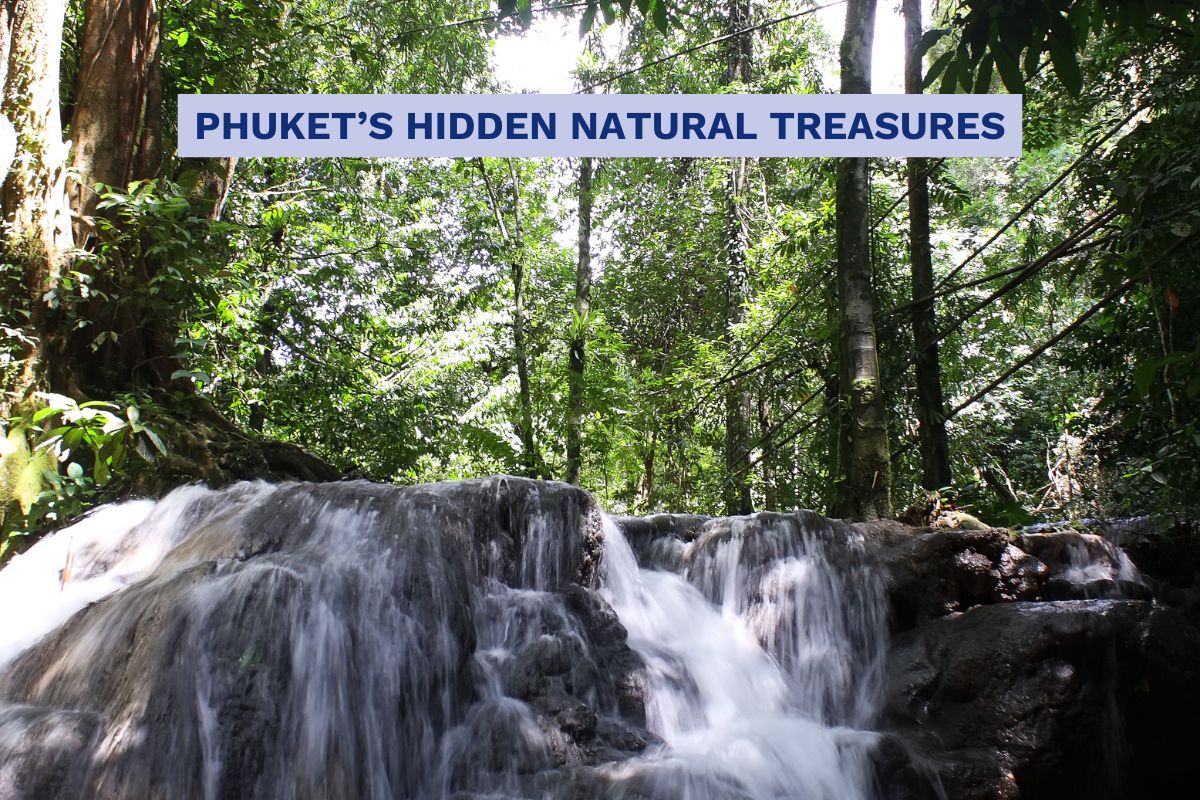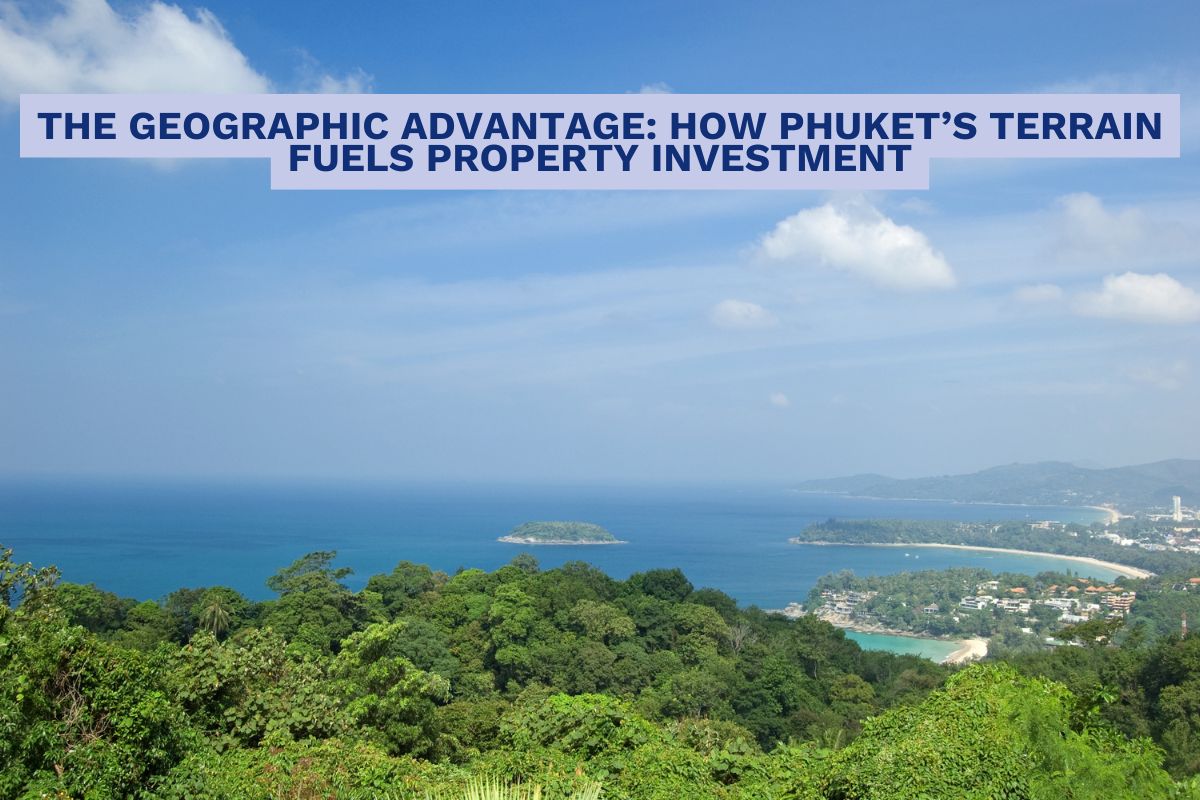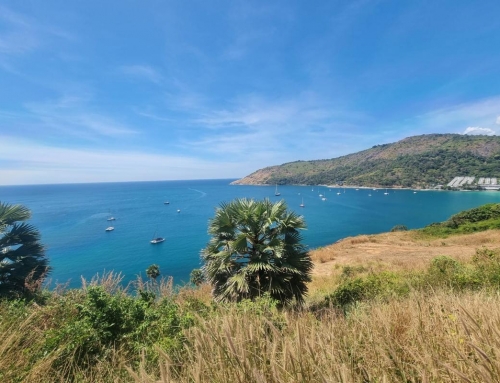Why Phuket is Perfect For a Variety of New Development Projects
Phuket is much more than just a beautiful island in Southern Thailand. Its fascinating geography and topography make it a truly unique destination. Not only for tourists but also for property developers, investors, and anyone looking to buy real estate in Phuket.
From lush mountains and tropical forests to white sandy beaches and hidden coves, the diverse terrain of the island creates ideal settings for a wide variety of residential projects. This includes luxury villas, sea view condos, and resort developments.
An Island with Depth and Dimension
Phuket is Thailand’s largest island, located in the Andaman Sea. It is connected to the mainland via the Sarasin Bridge. What makes it so distinct from other islands in Southeast Asia is its dramatic topography. Mountains, rolling hills, valleys, and flat coastal plains all come together to form a remarkably varied and scenic landscape.
This topographical variation directly affects how and where developments are built on the island. Elevated hills are perfect for Phuket sea view villas and luxury homes, while flatter areas near the coast are popular for beachfront condominiums, gated villa estates, and resort-style communities.
The Mountain Ranges of Phuket
About 70% of Phuket is mountainous. The island is part of the western coast mountain range that runs down the Malay Peninsula.
These hills run north to south, predominantly through the western half of the island, This creates prime areas for high-end real estate with ocean views, particularly in places like Kamala, Surin, Layan, and Kata.
Phuket’s highest point is Mai Tha Sip Song (Twelve Canes), a peak located in the northern part of the island, standing approximately 529 meters above sea level. These higher elevations are less densely populated and are often reserved for low-density luxury developments and private estates.
Forests, Waterfalls, and Protected Natural Spaces

Phuket is home to beautiful tropical forests, many of which are protected within national parks. The largest of these is Khao Phra Thaeo National Park, in the northeast. This area is one of the island’s last remaining virgin rainforest on the island. These green zones not only serve as attractive natural backdrops for residential projects but also enhance Phuket’s eco-friendly appeal to international investors.
The island also boasts picturesque waterfalls like Bang Pae and Ton Sai, often near potential development zones. Properties built near forest reserves or waterfalls typically appeal to buyers seeking wellness retreats, nature-based living, or detox and spa resorts.
Phuket’s Coastline: A Developer’s Dream
Phuket’s coastline stretches more than 200 kilometers, offering an abundance of beaches, cliffs, rocky headlands, and bays. This creates limitless opportunities for diverse development types:
-
Lagoon and beachfront resorts in Bang Tao and Mai Khao
-
Hillside villas with panoramic sea views in Surin and Kamala
-
Marina and waterfront residences in Chalong and Ao Po
-
Beach condos and investment properties in Patong and Karon
The west coast of Phuket is especially renowned for its long beaches and turquoise waters. This makes it ideal for holiday homes, luxury condos, and investment villas. In contrast, the east coast is calmer and less developed, but with growing potential for marina-based developments, eco-communities, and retirement villages.
Flatlands for Community Living and Infrastructure
The flatter areas of Phuket, especially around Chalong, Thalang, Cherng Talay, and parts of Rawai and Nai Harn, are well-suited to larger-scale developments. These include:
-
Residential communities
-
Family-friendly villa estates
-
Affordable housing developments
-
Commercial zones and retail hubs
These areas are popular for foreigners relocating to Phuket. This is especially true for retirees and long-term residents seeking convenience, proximity to schools, and easy access to shopping and hospitals.
Islands and Surrounding Marine Landscapes
Phuket’s geography isn’t limited to the mainland. The island is surrounded by dozens of smaller islets and marine attractions. The nearby islands of Koh Yao Yai, Koh Yao Noi, Coral Island, and Racha Island are gaining attention for exclusive resort and villa developments, especially those targeting wellness tourism and privacy.
These surrounding islands expand the scope of real estate investment beyond Phuket’s core. Some islands offer buyers a chance to own offshore villas, eco-lodges, and exclusive retreat-style properties.
Geography Meets Investment Potential
Phuket’s topographical variety ensures that there’s something for every type of buyer and developer. Whether you’re seeking to build a resort in the hills, buy a holiday condo on the beach, or invest in a family villa near the school district, Phuket’s landscape delivers.
The growing infrastructure, expanding airport, and increasing foreign demand all mean that Phuket is continuing to evolve. Phuket has become Thailand’s most dynamic real estate market outside of Bangkok.
Explore the Best Real Estate Opportunities in Phuket
If you’re ready to invest in a home or property in one of the most geographically diverse destinations in Asia, we’re here to help. From sea view villas to beachfront condos and eco-retreat developments, Phuket has it all.
View: Phuket Villas for Sale
Explore: Phuket Condos for Sale
Get in Touch | Call Now On: +66 9484 11918





Social Contact